Avoid WordPress Security Vulnerabilities – Quick And Easy Tips
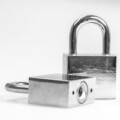
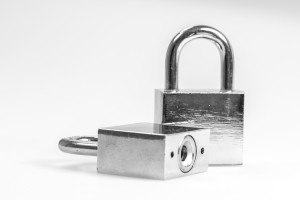 Want to know how to avoid wordpress security vulnerabilities? Here's a quick security question for you. If you have a WordPress site and the username and password you use to gain access to it are Admin and Test (or password!, are you at risk for your website being taken over?
Want to know how to avoid wordpress security vulnerabilities? Here's a quick security question for you. If you have a WordPress site and the username and password you use to gain access to it are Admin and Test (or password!, are you at risk for your website being taken over?
The answer is yes. What is said is you can have all security measures, all the fancy security plugins in place, but if your password is something that they can easily guess then you are leaving the door wide open.
That's why it's important to have a secure and hard to guess WordPress login and password. What can you do? Make sure your username is not the name Admin or Adminstrator, change that WordPress password regularly and use different passwords than you use for other WordPress or FTP sites.
Don't Use Admin As a Username
By default, when you set up WordPress it uses it with the username Admin, which means that when you login you type in the username Admin and some password. But this is giving the hackers half of the information they already need. If they already know that you are using this Admin, all they have left to guess is the password. And don't use something obvious like your first name, your first name and your last name or the title of the site.
But if your username is something meaningful to you but not obvious to strangers, now they don't know where to start with the username. And now potential intruders they are guessing about two different factors - your username and your password.
That's why even though WordPress, by default, sets your username as Admin, the first thing you should do is create a new user account and name it your first and last name, save it and then delete that original Admin account, that will cut down on a lot of automated attempts.
Change Your Password Regularly
Something else that is easy to do is change your WordPress password regularly. For example, once per month. This means that you are always thinking of some new thing to type, and some new password that someone might never guess, because you are changing it every month. You would be surprised at how many passwords consist of someone's name, child's name, or pet's name but if you are changing a password on a regular basis, adding in letters and numbers to it, now that's a password that no one will guess which means that no one will have access to your site other than you and the people you choose.
Finally, set different passwords than other WordPress blogs you own. Set a different password other than your email address or your FTP account. The problem with setting the same password for different accounts is if someone gets access to your WordPress site, now they have access to your website, your other WordPress sites, your email, your FTP, and so on. But if you use different passwords for WordPress, for email and for FTP that means if someone happens to gain access to your WordPress they don't have access to your other accounts.
WordPress Security Vulnerabilities Summary
In this article, we've looked at a number of common WordPress security vulnerabilities. We've seen that setting a secure WordPress login and password is easy. We've covered why you don't want to use Admin as your username, and the importance of changing your admin password regularly.
We saw how we must use different passwords for multiple WordPress blogs, for your email account and for your FTP account.
If you've read this article and want to know the next steps to keeping your WordPress website secure, why not request a chat about your security and perhaps how I can help you? Just fill in the form on http://wptrainingnow.com/blog/contact , and I'll be in touch.
Reduce WordPress Hacking With Three WordPress Plugins
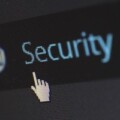
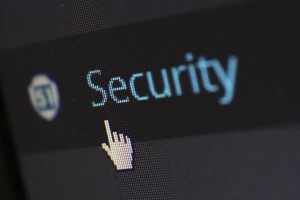 How can you reduce WordPress hacking with three WordPress plugins?
How can you reduce WordPress hacking with three WordPress plugins?
Let's be frank - hacking of websites is on the increase. And every website owner needs to take steps to prevent hacking. Is these a solution to this? Read on to discover the steps you can take ...
Install these three simple plugins to WordPress to minimise the risk of hacking and intrusion. It's never fun for someone to get access to your WordPress blog, but unfortunately it happens every day. Every day hackers delete, deface or simply take over websites. You can avoid all that by installing the Login Lockdown plugin, the HTTPS for WordPress plugin and the WP-Security plugin.
Login Lockdown
Login Lockdown is a plugin that blocks access to your blog if someone enters the wrong password too many times. This is a common technique for hackers to get entry to your WordPress blog. They simply try many common passwords over and over until something works. So Login Lockdown will block access to someone after a certain number of failed passwords. It's a very simple plugin and it makes sense for you to install it to make sure that any intruder is now locked out.
Https For WordPress
You should also consider HTTPS for WordPress. HTTPS or SSL encrypts everything that gets sent to and from your WordPress site, including your username and password.
Normally your username and password is broadcast out in the open. That means if you use any kind of public wifi anyone else on that wifi can install a simple plugin and capture every password you type into WordPress. That is really not good.
To guard against this, you can either not use unsecured wifi or you can use this HTTPS plugin. This will force you to use HTTPS when logging into your WordPress dashboard, therefore protecting your password from prying eyes. Note that you will also have to have your hoster install an SSL certificate, which may involve some cost to you.
WP-Security
And finally, the WP-Security plugin installs right into WordPress and scans all your folders for many security vulnerabilities. It checks it for any weak points, any holes, out of date plugins and gives you a very easy to follow list of things that you must do in order to keep WordPress secure.
Obviously, I can't guarantee you will be 100 percent hack proof, but you need to at least take these basic steps to keep yourself safe.
Summary: Reduce WordPress Hacking With Three WordPress Plugins
These three plugins will get you on your way to having a secure WordPress blog. Install Login Lockdown to lock out anyone after a certain number of failed attempts, install HTTPS for WordPress to make sure that any time you login to your dashboard it moves you over into SSL, and WP-Security scan your folders.
There are many other useful plugins that you can install to improve your security. But beware - some will clash with others. To have a no-obligation chat about improving the security of your WordPress site, contact me here.
Advanced WordPress Security Plugin Tips You Need To Know
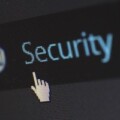
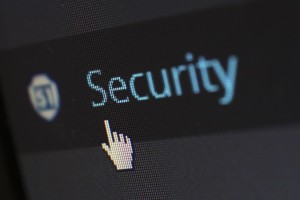 Do you want to know the three advanced WordPress security plugin tips every WordPress website owner should know to make your website secure? If you're a WordPress website owner who wants advanced tips on how to make your website secure so that it doesn't get hacked and you lose access to it, then read this article to take your WordPress security plugins knowledge to the next level.
Do you want to know the three advanced WordPress security plugin tips every WordPress website owner should know to make your website secure? If you're a WordPress website owner who wants advanced tips on how to make your website secure so that it doesn't get hacked and you lose access to it, then read this article to take your WordPress security plugins knowledge to the next level.
Advanced WordPress Security Plugin Tips No.1: Know What TYPE of Security-Enhancing Service You Need
What Is The Tip?
It's essential that you understand what type of security service you need. There are many on the market ranging from free to really quite expensive.
Why Is This Important?
All security-enhancing services are not the same! Some are based around simple free plugins with limited functionality. Others include a raft of scanning, updating and cleanup software. You have to understand exactly what services you need, otherwise you'll end up paying over the odds for services you don't need.
To help you out, ask yourself a few questions to put this tip to work for you.
- Have you already been hacked, or suspect you might?
- Do you need constant monitoring and repair against hackers attacking your site?
- Do you need to block hackers from trying to log into your WordPress backend?
- What's the best way to use this information to get better WordPress security?
Advanced WordPress Security Plugin Tips No.2: What Budget Should You Have For WordPress Security?
The answer to this question is not 'none'. You'll either need to pay with your time or with hard cash to get the level of protection you need.
To get an idea of how much you need to pay, answer these questions:
- Is your website a revenue generating site or just a lifestyle enhancing site?
- Must your site be up 100% of the time, and if not, what downtime can you tolerate?
- Now what is your budget for website security?
- If you're still stuck, imagine your website is taken offline by hackers.
- What will it cost to reinstate it from scratch? Several hundred Pounds? Several thousand?
- How much would losing your website cost you in lost business?
- How much business will you lose while it's offline?
Why Is It Important?
This tip is priceless because you can now determine what budget you should be allocating to security. This makes it much easier to select suppliers.
Once you know what type of protection you need and what you'll need to pay, you can review the offerings from the major vendors like Sucuri, WordFence, All-in-One Security and others.
How Do You Implement This Tip?
So how do you implement this tip to get the result you need in terms of better WordPress security?
Once you know what your business impact of a lost site is, it should be quite straightforward to set a security budget that will guard against this.
For example, let's say your site cost £1,200 to build and brings in £500 per month in client business. That's £6,000 per year. You should certainly be prepared to have a budget of a few hundred pounds per year to ensure you don't get hacked, and can get back online quickly.
Advanced WordPress Security Plugin Tips No.3: Know What Security Options You Have Open To You
This is where you need to do some research. Based on your answers to the two questions above, do you require a comprehensive suite of security services that will rapidly and automatically restore your site to the last-known valid state? Do you require a simple login blocking plugin? Do you need something in between?
Do you need malware cleanup, and how quickly does this need to happen? Your hoster MAY perform malware cleanup, but their implementation timescales may be a week or longer. Can you afford to be offline for that long?
Which Security Services, If Any, Have You Available To You Right Now?
This may be 'none', but you may have some basic security features included with your hosting. It’s best to check this out, to avoid paying out for services you already have.
Why Is This important?
Once you know what your options are and know what your budget should be, you can begin to shortlist suppliers.
And once you've made your decision and paid your money, you can relax knowing your WordPress site is well protected!
How You Can Find Out More ...
Now that you've got the advanced WordPress security plugin tips success down, I'd like to invite you to get even MORE advanced help with your free, instant access to my "Essential WordPress Plugins Online Training."
If you're a WordPress website owner who wants to make your website secure so that your site will not get hacked and you lose access to it then my "Essential WordPress Plugins Online Training" will give you the information you need.
Click Here For More: http://alunloves.it/plugins
WordPress Security Plugin Mistakes – And How To Avoid Them

 Do you know the three biggest WordPress security plugin mistakes owners make that leave their websites wide open to attack by hackers? If you want to make your website secure and avoid the WordPress security plugin mistakes that stop most people dead in their tracks read this immediately because the killer mistakes and what to do instead are inside this article.
Do you know the three biggest WordPress security plugin mistakes owners make that leave their websites wide open to attack by hackers? If you want to make your website secure and avoid the WordPress security plugin mistakes that stop most people dead in their tracks read this immediately because the killer mistakes and what to do instead are inside this article.
Mistake No.1: Not Keeping Your Plugins and Themes up to Date
What is the mistake?
The mistake here is simply not keeping your plugins and themes updated to the latest level. The same also applies to keeping your WordPress version up to date.
Why is it a mistake?
This is a huge mistake because you're not benefiting from the corrections that developers continually make to fix the security holes they discover in their code. And any vulnerabilities with WordPress, popular themes or plugins are quickly exploited by hackers.
What should you do instead?
Instead of leaving your plugins, themes and WordPress versions on old versions, simply update them when new versions are released. It's as simple as that. These days, most plugins, themes and the WordPress base code will prompt you to update them to the latest level when a new version is released. It's just a question of clicking on 'Update' in your WordPress Dashboard.
Mistake No.2: Not Creating Secure Passwords
What is the mistake?
The mistakes here are to first of all use 'Admin' as the administrator username and something like 'password' or 'test1234' as your password. This is just asking for trouble.
Why is it a mistake?
This is a mistake as the default username 'Admin' is consistently the most common username used by hackers to attack your site. They know that so many people do not change the default username, and so they already are 50% of the way into hacking your site. They now only need your password.
What should you do instead?
Instead of creating insecure usernames and passwords, you should always use a hard to guess administrator username and a secure password. Having a secure password is easy, as WordPress itself will generate one for you.
Now you just need a utility like LastPass or Roboform to store all your passwords securely so you don't forget them.
Mistake No.3: Not Using a Plugin That Stops Brute-force Attacks
What is the mistake?
The mistake here is to not select a security plugin that has a function that detects and blocks brute-force attacks. These are attacks where many tens (or hundreds) of passwords are attempted by the hacker in rapid succession.
Why is it a mistake?
Brute-force attacks are the most common type of hack that to which your website can be vulnerable. And they are fairly easy to prevent if you have the right tools.
What should you do instead?
Use a security plugin that stops brute-force attacks by locking out a user if they incorrectly attempt to login more than a set number of times. You may decide to set this limit at 10 failed logins. If you do, a hacker will be locked out and unable to access your site for a period of time.
Don't set this tool low, as if you get your password wrong 10 times (in this example), you too will be locked out! Although better security plugins will allow you to whitelist your own IP address.
Summary of WordPress Security Plugin Mistakes
Now that you know the top three WordPress security plugin mistakes and how to avoid them, I'd like to invite you to take your next success steps with free instant access to my "Essential WordPress Plugins Online Training."
If you're a WordPress site owner who wants to make your site hacker-proof then my "Essential WordPress Plugins Online Training" will help you to both speed your site AND make it secure!
Click Here For More: http://alunloves.it/plugins
Avoid Getting Your WordPress Website Hacked
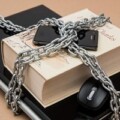
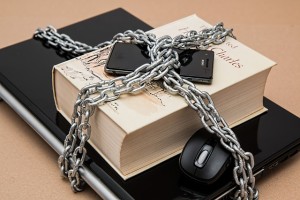
Avoid Getting Hacked
Sadly the instances of websites being attacked is increasing. Luckily there are easy steps you can take to keep your WordPress website from getting hacked. I hope you are not losing too much sleep over the possibility of your website and your blogs getting hacked, being taken over, being destroyed or being changed. If you are worried about this kind of thing, there are a few preventative steps you can and should take right now to ensure that your blog is kept safe.
Get Good Hosting
You should avoid shared and cheap hosting, you should install trusted themes and plugins, and finally you should keep your computer spyware free.
What do I mean when I say to avoid shared hosting? I mean that many people, in fact, pay a web host, such as HostGator to have web hosting, and they will take some of their space. They might have for example, one gigabyte of space and they might sell 100 megabytes to you for the same price they pay. Now this opens up a few problems, because what if this one person sells space to ten people in the same area? Well there are a few things some people can do to get access to other folders that do not belong to them simply because they belong to the same reseller.
What you are going to want to do is pay at least $20 dollars per month for web hosting. Don't get sucked into web hosts that will charge you just a dollar or one simple fee for lifetime access. Get a real web host such as HostGator or BlueHost which does charge $20 or $30 dollars per month, but it is well worth it to have the faster performance and extra security.
Get a Decent Paid Theme
One of the biggest mistakes people make is to use a free theme. Your theme governs the look and feel of your site. Paid themes tend to be flexible and adaptable - for example in layout, colours, fonts and general appearance. If you get a free theme you may well find yourself looking for a programmer who understands PHP script and CSS.
Some people recommend ThemeForest as a source of paid themes, but I find they're a collection of themes from various sources of highly variable quality. I prefer to deal with one organisation that is dedicated to quality - I use themes from WooThemes. They're owned by Automattic - the people who own WordPress, so you know they're going to work. And their support is good. Contact me here if you'd like to see what they offer: Contact me
Choose Robust, Trusted Plugins
As well as choosing a good paid theme, only use plugins that you can trust. This means don't install a plugin that came out just yesterday. Install a plugin that has real reviews, and just do your research to avoid as much as possible a plugin that contains malware. Most people don't realise that any plugin (or theme), if it so chooses can delete all the files on your website. It can actually copy your whole website and send it off somewhere else.
So you need to trust the plugins and the themes that you are using.
Keep Your Home PC Malware Free
And finally, keep your own computer spyware free. Install a virus scanner on your local computer, such as Norton, AVG and MalwareBytes and scan it on a regular basis. This may not be immediately obvious, but if someone has access to your office computer, your desktop computer or whatever and can record every single password you type in. And that means because they have access to your computer, they can now tell what your WordPress password in and login is as well.
Some simple preventative measures to take to avoid your site getting hacked is to avoid shared and cheap hosting, install only trusted themes and plugins, and to keep your computer spyware and malware free.
Watch My Free Online Training
I've just recorded an online training on precisely this topic. So if you want an online training with no filler - just the facts, if you click here: http://alunloves.it/plugins This covers what your options are for protecting your WordPress site with plugins, which ones I recommend and why.
What To Do if Someone Gets Access to Your WordPress Site

 Getting your WordPress blog hacked is a scary thought. After all, you spent so many hours updating that site and making it perfect and now someone is coming along and they might have destroyed it, changed it, or is now trying to extort money from you for access.
Getting your WordPress blog hacked is a scary thought. After all, you spent so many hours updating that site and making it perfect and now someone is coming along and they might have destroyed it, changed it, or is now trying to extort money from you for access.
If the person who had access to your site has installed malware, then you'll need to get that cleaned up. There are many good services, and if you contact me, I can point you in the right direction.
Assuming the person has not installed malware or locked you out, there are a few things you can do when someone gets access to your site. The very first thing you should do is backup everything. Backup your blog, backup your files, keep it all in a safe place, and let your web host know immediately that someone has access. They can go in and make sure to change your passwords and clean out any extra FTP or Shell accounts that the hacker may have added.
The very important thing you should do is backup everything, change all passwords, and delete and restore your site.
Now backing up everything is a pretty straight-forward process. If you have a WordPress backup plugin and you should, make sure to run that and grab the backup that it has generated. Then also be sure to grab a backup of the entire account. If you don't know how to do this, your web host should be able to do it for you. Now you have a copy of all your files, so that even if the hacker deletes everything you still have a copy.
The next step is to change all of your passwords, and I do mean ALL. Change your email account password, change your WordPress account passwords, your FTP login, your account login, change any and all passwords to make sure this hacker can't get in later on.
And then what you should do is delete and restore. Most web hosts will recommend that if someone has really gained access to your site to back it up, blow away the entire account and set it up somewhere else, because you don't know if they have set up some kind of a plugin or some kind of a script that will monitor for any new logins or any new passwords.
Delete whatever is on there, especially any new pages or content the hacker may have added, and restore your account somewhere else.
After you restore it, you are going to have to comb through it and make sure that these new restored passwords are changed as well, just to make sure that someone can't get in. But at the end of the day, if you have removed any new things the hacker has added and changed all of your passwords, there really is not a lot they can do to get back in.
I think the most important thing for you to do is backup your site on a regular basis, that way if someone gets access to your site, it's simply a minor inconvenience of changing passwords and restoring. There is no loss of information. That is what you do if someone gains access to your WordPress site. Backup everything, change all passwords and delete and restore what's there.
Secure Your Blog: Top Tips to Keep Your WordPress Blog Secure
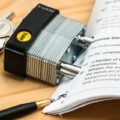
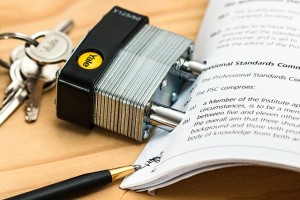 Believe it or not, it doesn't take a rocket scientist to keep your blog safe from most hackers. It just involves you taking a few simple steps and a few safeguards to make sure that you don't have problems in the future.
Believe it or not, it doesn't take a rocket scientist to keep your blog safe from most hackers. It just involves you taking a few simple steps and a few safeguards to make sure that you don't have problems in the future.
Here are a few things you can do right now. Make sure all your WordPress usernames and passwords are strong passwords, keep your email secure, lock anyone else's IP address in your backend cPanel and install the Akismet anti-spam plugin.
You would be amazed and surprised at how many people simple passwords such as their name, pet's name or names like test, or test1234 as the password to their WordPress blog. And in fact, there are robots or spiders that comb the internet trying to find these websites that have named their passwords in these simple names. That means when you set up your WordPress account, don't call it Admin, call it something that is non-standard such as your name. And when you have a password, name your password something with at least one number, one uppercase letter or even one punctuation character to ensure that no one can guess it.
The next thing you should do is make sure that no one has access to your email account. It does you no good to have a strong WordPress password but a weak email password, because someone can always gain access to WordPress by using the lost password tool. This means if someone has access to your email account, they can use the lost password and reset your WordPress password and now gain access to your website.
This means that you should secure your email, change your password regularly and be very careful who's computer and whose wireless network you use to check that email.
Now here's a great thing that any paranoid webmaster can do, using your cPanel backend, you can in fact block access to what's called the WP-Admin Folder in your WordPress site. Basically you can go to a site such as what is my IP.com and it will show you a series of numbers. Now this number corresponds to you on the internet. And you can in fact block everyone on the internet from accessing your WP-Admin Folder, your administrator dashboard, and then only allow this specific IP address that is yours to access it.
This means that even if someone happens to have your WordPress password, even if you have a weak password, you are the only person who can login to that backend.
And finally, one thing that every blog owner should do that enables comments on their blog, is to use what is called the Akismet anti-spam plugin. What this does is checks any new comments coming to your blog for spam. And if you don't have a plugin like this, your blog will at some point be flooded with thousands and thousands of spam comments flooding your site with all kinds of nasty links and garbage. Install this Akismet anti-spam plugin or turn off comments entirely and that will help your blog from being spammed to death.
Those are some very simple tips to help secure your WordPress blog. Use strong passwords, secure your email, block the WP-Admin IP addresses except for yours in cPanel, and use the Akismet anti-spam plugin.
The Top Three Ways To Secure Your WordPress Blog
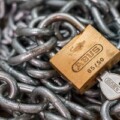
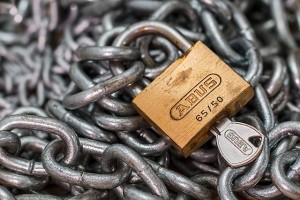 If you have a WordPress blog or a website, you may be wondering how am I supposed to keep it safe from hackers and from accidental changes or deletions?
If you have a WordPress blog or a website, you may be wondering how am I supposed to keep it safe from hackers and from accidental changes or deletions?
In addition to any kind of fancy modifications or security plugins, there are a few easy steps you can take right now within the next few minutes to make sure your WordPress website is secure.
The first thing you can do is only connect to WordPress on a secure WiFi connection, only use trusted plugins, and keep WordPress up to date.
Do you know that when you connect to a website using unsecure WiFi, which means airport WiFi, Starbuck's WiFi, public WiFi, that anyone can see your username and password. That means when you connect via FTP or simply log into your WordPress dashboard anyone can see exactly what your username and password is and join for themselves.
That's why it's very important to only connect to your WordPress site and only connect to FTP if you have an SSL connection or you're connecting a cellular 3G network instead of WiFi. If you don't know what any of those things are, then simply make it a point to only connect to your FTP website and WordPress from home instead of in public.
Next, only use plugins that you trust. Are you aware that any WordPress plugin, if it so chooses, can have access to your entire WordPress site? All of your users, all of your content, most of the time, to every single file on your website.
That is the reason why it's very important that you only use WordPress plugins that you trust. Don't go out and install 200, 300 plugins just because they all seem like they have cool features. If a plugin is brand new, if no one seems to be using it, that is not a good sign, and it may be a Trojan Horse kind of plugin where someone had simply put it out onto the internet in the hopes that someone else will install it on their website, and now you have given the hacker complete access to your files and your content.
Finally, a very easy way to secure your WordPress blog is to keep WordPress up to date. People find security holes all the time, and WordPress is quick to fix those holes, but it does you no good unless you update your blog to the current version which is safeguarded against most attacks.
Luckily the most current versions of WordPress have a single button you can click to update it, which means it downloads and installs the most recent version so you are now protected.
What Could Happen If Someone Gains Entry Into Your WordPress Blog?
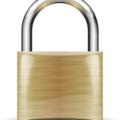
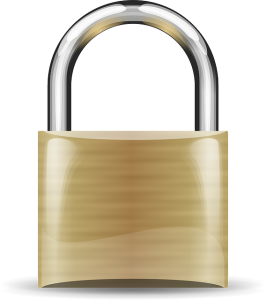 I don't want to scare you but I want you to be aware of the reasons why you should backup your WordPress blog, and even better protect it against someone getting access to that site.
I don't want to scare you but I want you to be aware of the reasons why you should backup your WordPress blog, and even better protect it against someone getting access to that site.
Someone getting into your WordPress blog can delete anything that is there, can replace it with something else, redirect it and in fact access every single file in that WordPress site, sometimes other websites on the same server. That is why it's really important to keep people out and backup your site just in case something goes wrong.
Something that is very easy to do if someone gets into your WordPress blog is delete it. There is in fact a plugin called Bulk Delete that can delete all plugins within that blog, kind of a scary thought. But if you keep your blog backed up, then no one can really hurt you, even if you just use something once per month or once per week.
Let's say in the worst case you back up your site on a Monday, and someone gets into your site and deletes it on a Friday, at least you have only lost the past five days of work. You haven't lost the past two years, if not more.
What is even scarier is that someone who gets into your WordPress site might replace it with something else. Many terrorists, religious and activist groups have in fact used hackers to gain entrance to weakly protected WordPress sites and replace it with their own images and content.
What also might happen is someone might set up your site to redirect to a new site, or display some ads. And even worse, if your site gets flagged as an attack site, as a problem site other people will not be able to see it.
That is something that might happen, is if you load your WordPress site and it seems to be redirecting to some far off place on the internet, it might have been hacked and you should investigate that.
One of the scariest things about someone getting into your WordPress site is that they will probably be able to get access to all files in your site using the using the file manager plugin in WordPress. And even if you don't have this file plugin installed, they can easily install it from the WordPress dashboard. And depending on how your server is configured, they might be able to see every single website and account on that server. Kind of a scary thought.
If someone gets into your WordPress blog, it's not just about them changing content or redirecting to a new place, they now can see all your files, all your blogs, all your videos, all of your information. And all this is a reason for you to lock down WordPress.
Use a hard to guess password and be very careful about where you log into your blog from. And above all, backup your site, so just in case the worst happens you are still protected and you can still get your stuff back.
Your WordPress Dashboard, Theme and Plugins Explained

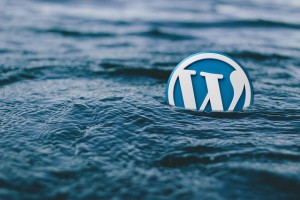 Whenever you're dealing with anything slightly technical, there are going to be many terms you'll need to know about. But luckily, with a blogging platform such as WordPress, there are not too many terms and once you know them, you won't have to remember them. You'll just be able to use them.
Whenever you're dealing with anything slightly technical, there are going to be many terms you'll need to know about. But luckily, with a blogging platform such as WordPress, there are not too many terms and once you know them, you won't have to remember them. You'll just be able to use them.
And with WordPress, you log into a dashboard. You choose a theme and you might add additional plugins to your blog so let's talk about what all those things do and why they're all very important for you.
First of all, when you have a website, when you have a WordPress blog, people see the front end of it. They see the content that you have already written. The comments have already been posted. But how do you write that content in the first place? You log in to what some people call the back ends or the control panel or the administration area. But WordPress keeps it simple and calls it the dashboard.
You log in and it shows everything you need to know right there. It shows the post that you've written. It shows comments that might need to be approved or any kind of problems with blog. It's the WordPress dashboard and you can log in to it by going to whatever the address of your WordPress site is and add /wp-admin to the end of it. Once you go there, you will be able to do anything. Add new post, delete post, rearrange post, change navigation. Do any of that stuff from your WordPress dashboard.
But if you have a brand new site, the first thing you're going to want to do is to set up the design or appearance or what's called the theme of your WordPress blog. Now, your theme is the whole template, the layout which means that if you decide you want to have a blog with a black background and white text, go and find a theme that has that already assigned for you.
If you want to have a design with a huge header graphic then find a theme that does that for you. If you want a design with one sidebar, one sidebar on the left, on the right, with 3 sidebars, find a theme that's already done that for you. And there are literally thousands of free WordPress themes and even more paid ones where you can click a few buttons by going to Appearance, Themes, Install a new theme and you can search their huge directory of WordPress themes to install right away. You install the theme and it changes the entire look and feel of the design of your website.
So you're thinking, "That's great. I go in my dashboard, I can change posts. I can edit themes. Now, what are plugins?" Well, plugins are more of the functionality, what the blog actually does. For example, have you seen blog posts where there's button for someone to retweet it, to retweet your blog post to send it to Twitter to tell your friends about it? Well, that is due to a plugin. Someone installed a Twitter plugin that added a button to every post on that site. And so now, even if you change your theme from a black background to a blue one, that Twitter button will still remain.
You might have seen some WordPress blogs where they add a discussion area or a forum to it. Well, that's a plugin. There are plugins that will actually allow you to add a message board, discussion forum to your WordPress blog. There are plugins that will allow you to add a pop up box to your WordPress site. That is also a plugin. So you can see that the theme controls the way the blog looks. The plugin controls what the blog actually does.
So I hope that when you log in to your WordPress dashboard, in addition to saying what kind of content, what kind of post you can add or change or edit or delete, you also get that you can change the theme or the design or the look of your blog with a few clicks and install or move or change plugins which add additional functions to your blog. So go ahead right now, log in to your WordPress dashboard and have fun.






